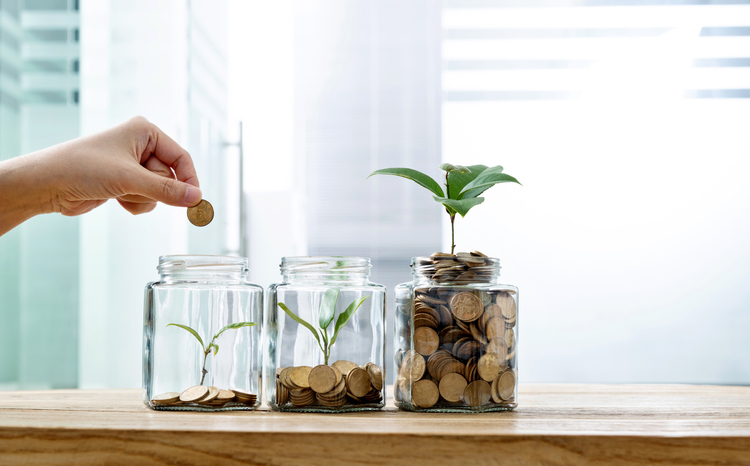Charitable Gift Annuities Are 0n The Rise
Move over, charitable trusts. Make way for the charitable gift annuity.
Typically viewed as entry-level gifting methods thanks to low minimum contribution amounts, low cost, and simplicity, charitable gift annuities have had a spike in inflows from wealthy donors lately. According to a BNY Mellon Wealth Management study, in 2019, assets in gift annuities were up 21% over the prior year, and the average gift was 56% larger. Assets continued to flow into charitable trusts, but at only a slightly higher level than in 2018.
The surge in popularity in gift annuities is likely a result of people’s desire for a guaranteed lifetime annuity at a time when yields are at historic lows in the fixed-income market, and a hesitation to sock money into a charitable remainder annuity trust (CRAT).
A CRAT is the gift annuity’s equivalent in the trust world, and typically a popular tool. But ultralow interest rates and high valuations in the stock market make for a lousy environment for CRATs, says Crystal Thompkins, national director of gift planning services at BNY Mellon Wealth Management, who expects gift annuities’ popularity to extend through this year.
As winds shift in the economy, the markets, and regulatory environment, it’s not uncommon for the popularity of different charitable planning tools to rise and fall. Given the surge in popularity of gift annuities, it’s worth a look at how they size up these days relative to their closest charitable trust cousin.
Charitable Gift Annuities
A charitable gift annuity is a simple contract guaranteeing that if you give a nonprofit organisation a lump sum, it will pay you a fixed, lifetime annuity based on actuarial factors—a host of market factors combined with your life expectancy. Minimum donations are around $2,000 and, unlike a trust, no attorney is required to set one up (hence no attorney fees).
Even if you live beyond your life expectancy, after your lump-sum equivalent has been paid out, you continue to receive the annuity. Depending on the contract, the annuity can continue to pay out to a surviving spouse. If you and your spouse die before your lump sum has been paid out, the charity keeps the balance in its coffers.
Payments can be deferred, which increases the amount paid out in the future annuity. A partial donation for the gift can be taken upfront. Capital gains taxes on the growth of underlying assets are spread over the annuity payments. When interest rates are low, the future capital gains’ bite out of annuity payments is lower, leaving more intact as income, Thompkins says.
Nonprofit groups that offer charitable annuities have large infrastructures, such as museums and universities. “We’re talking those with hundreds of millions in assets that are segregated to support their annuity programs,” Thompkins says. “These are diverse pools designed to absorb potential risk. It’s like managing a pension.”
The downside is that not all nonprofits offer gift annuities, and they aren’t customised, says Pam Lucina, chief fiduciary officer at Northern Trust.
Charitable Remainder Trusts
In contrast, trusts can pay out to a number of different charities, over a specified period of time instead of a lifetime, and can be used to transfer assets to heirs. The CRAT is the most similar to a gift annuity: It turns a lump sum into an annuity, and what’s left at the end goes to charity—at least 10% of assets transferred to the trust is required to be left as a gift.
But the CRAT has lost its luster lately, Thompkins says. The annuity and future gift are dependent on the high probability of the underlying invested assets performing within certain parameters. With stock market valuations high, and the economy in ragged shape due to Covid-19, there’s good reason for concern that the market could enter a sustained bear market.
“In 2008 and 2009, there were trusts that were exhausted with no benefit to either the charity or the donor,” Thompkins says. “Many people are leery now.”
 Copyright 2020, Dow Jones & Company, Inc. All Rights Reserved Worldwide. LEARN MORE
Copyright 2020, Dow Jones & Company, Inc. All Rights Reserved Worldwide. LEARN MORE
This stylish family home combines a classic palette and finishes with a flexible floorplan
Just 55 minutes from Sydney, make this your creative getaway located in the majestic Hawkesbury region.
More than one fifth of Australians are cutting back on the number of people they socialise with
Australian social circles are shrinking as more people look for ways to keep a lid on spending, a new survey has found.
New research from Finder found more than one fifth of respondents had dropped a friend or reduced their social circle because they were unable to afford the same levels of social activity. The survey questioned 1,041 people about how increasing concerns about affordability were affecting their social lives. The results showed 6 percent had cut ties with a friend, 16 percent were going out with fewer people and 26 percent were going to fewer events.
Expensive events such as hens’ parties and weddings were among the activities people were looking to avoid, indicating younger people were those most feeling the brunt of cost of living pressures. According to Canstar, the average cost of a wedding in NSW was between $37,108 to $41,245 and marginally lower in Victoria at $36, 358 to $37,430.
But not all age groups are curbing their social circle. While the survey found that 10 percent of Gen Z respondents had cut off a friend, only 2 percent of Baby Boomers had done similar.
Money expert at Finder, Rebecca Pike, said many had no choice but to prioritise necessities like bills over discretionary activities.
“Unfortunately, for some, social activities have become a luxury they can no longer afford,” she said.
This stylish family home combines a classic palette and finishes with a flexible floorplan
Just 55 minutes from Sydney, make this your creative getaway located in the majestic Hawkesbury region.






















